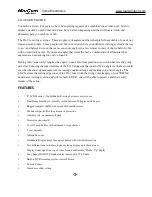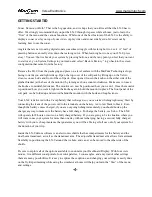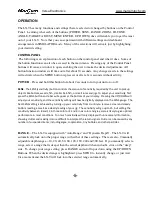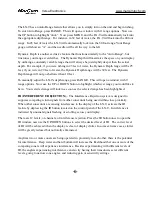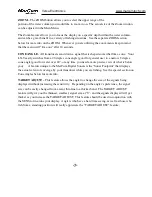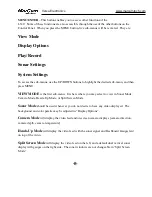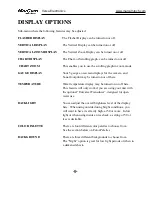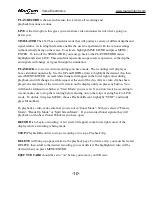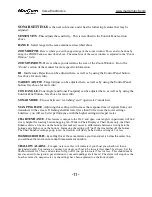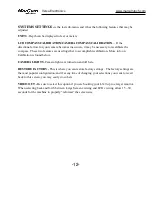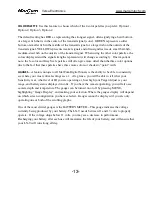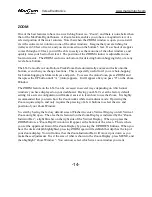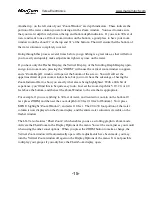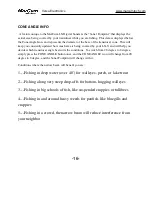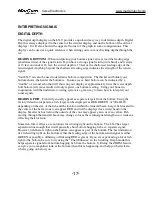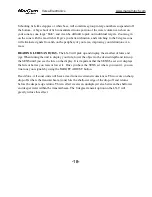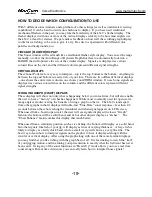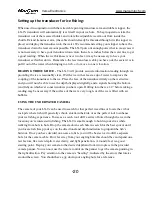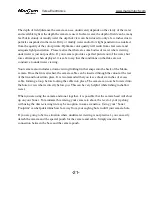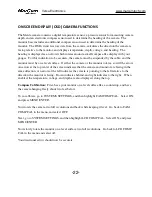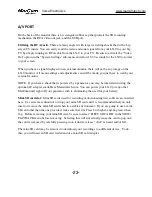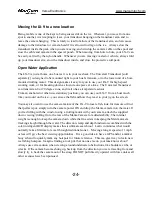
INTERPRETING SIGNALS
DIGITAL DEPTH
The digital depth display on the LX-9 provides a quick and easy way to determine depth. Digital
Depth is always displayed in the center of the circular display, and on the bottom of the vertical
displays. It will also show in the upper left corner of the graph in some configurations. This
display can be used as a quick reference when setting your zoom or checking depths through the
ice.
READING BOTTOM
- When interpreting your bottom signal, always read the leading edge
(shallowest side) of the signal return. If you have a strong signal return (wide band) and it starts
at 13 feet and ends at 16 feet, the correct depth is 13 feet or the shallowest leading edge of the
return signal. Anything beyond the shallowest leading edge indicates the strength of the return
signal.
Your LX-9 can also be used to determine bottom composition. The thicker and bolder your
bottom shows, the harder the bottom is. In some cases, hard bottom can be indicated by a
“double” or second echo that will show on your display at approximately twice the water depth.
Soft bottom (silt, mud, muck) will only register one bottom reading. Using your Sonar in
conjunction with the underwater viewing system is a great way to learn how to interpret your
sonar signals.
READING FISH
- Fish will generally appear as separate targets from the bottom. Using the
factory default color palette, a fish target can be displayed as RED, GREEN, or YELLOW,
depending on the size of the fish and the location within the transmit beam. Larger fish located in
the center of the beam (cone) can appear RED and will be displayed as a wider band on the
display. Smaller fish or fish on the outside of the cone may appear green or even yellow. Fish
moving through the transmit beam may change color as the return signal strengthens or weakens
reflecting their location.
Some fish, like walleyes, are notorious for cruising right on the bottom. The LX-9 has target
separation fine enough that it will generally show bottom hugging fish as a separate signal.
However, fish that are right on the bottom can appear as part of the bottom. The best indication
of a fish sitting right on the bottom is that the leading edge of the bottom return signal is either
GREEN or possibly a dithering or flickering RED segment. If you are experiencing a lot of fish
tight to the bottom, be sure to try using the “Chart Enhance” in the Scrolling Graph mode-this
helps separate signals from bottom hugging fish from the bottom. Utilizing the ZOOM feature
can give you a magnified look at the bottom when this is happening, and help you better learn
what is going on below you.
-17-
Versa Electronics
www.marcumtech.com

